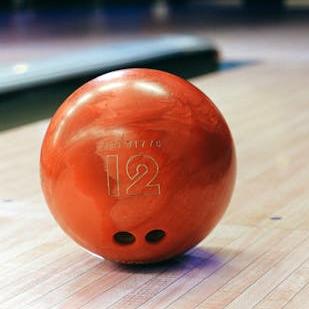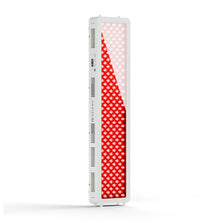With an expected annual market worth of $802.7 million and a CAGR of 4.4% by 2031, red light therapy remains one of the most popular treatment methods for various skin conditions worldwide. Moreover, red LED light therapy nowadays has a proven track record of helping in improving sleep quality, weight loss, boosting energy, and more. Yet, in some cases,

Understanding Why Your Red Light Therapy Might Not Be Delivering Results
The main thing
Common Mistakes in Red Light Therapy Usage That Hinder Effectiveness
In most cases, various RLT devices are self-applied. So, for starters, every user must ensure they follow the whole procedure correctly during their treatment sessions. The most common reason for poor results is related to the misuse of devices. So, let’s dig into that category of issues more deeply.
Inconsistent Application: Frequency, Duration, and Timing Matters
Duration, frequency, and proper timing are key factors that prognostically might lead to a significant improvement of the red light applications. For example, studies show that applying red light twice a day helps to suppress the growth of Candida albicans biofilm [2]. Yet, various conditions require altering application parameters. That’s why you always need to adjust the frequency, duration, and timing of RLT procedures to meet your individual requirements.
Incorrect Device Usage: Distance, Coverage, and Settings
Distance, coverage, and settings also play a significant role in achieving better outcomes. Treating a wound with a 630 nm red-light laser at distances of 3 and 5 cm shows slightly varying results [3]. Also, depending on the condition, you should cover a larger body area for a better effect. This is especially important for such skin conditions as acne and psoriasis. Ideally, the coverage must be up to 2-5 inches larger than a skin lesion. Last but not least, varying device settings (predominantly different wavelengths) also have a variable impact on different aspects of your health.

Key Device and Environmental Factors Affecting Red Light Therapy Outcomes
RLT devices by Bestqool can generate 630 nm, 660 nm, 850 nm, and 940 nm wavelength lights. Other technical specifications of our apparatuses, including power output, also vary considerably. Naturally, the effectiveness of any individual case might alter due to those specifications. In addition, environmental and users’ biological factors also considerably impact the results.
The Importance of Wavelength and Power Output in Red Light Therapy Devices
Wavelength is believed to be one of the most crucial factors in the effectiveness of red light therapy. For example, applying 650 nm light stimulates the process of new blood vessel development (angiogenesis) way more effectively than using 800+ nm light [4]. A combination of the wrong wavelength with low power output also often results in poor results. So, always read the device manual carefully to understand if the specifications of your device are enough to treat your condition or achieve the expected effects.
External And Biological Factors: Light Interference, Skin Conditions, and Others
Sometimes, a combination of RLT and sunlight might lead to worse results. For example, blue light, which is a part of the ultraviolet spectrum, affects mitochondrial functions in a different way compared to red light [5]. As a result, your RTL procedures might be inefficient when applied in sunlight. Other biological factors, e.g, your skin tone, skin type, pigmentation, age, gender, metabolic
Troubleshooting Your Red Light Therapy Routine for Improved Results
Routine use of red light therapy can help you resolve a wide variety of health-related issues. To get a general understanding of the benefits that RLT brings, you can check one of Bestqool's previous blog posts. Yet, poor outcomes and mediocre results can bring severe frustration. So, we’d like to share a few advice that will help you troubleshoot your red light therapy routine.
Reassessing Treatment Parameters: Adjusting Time, Distance, and Frequency for Personalized Results
First, you can prolong the application time, decrease the distance from the source of red light to your body, and increase the treatment frequency to
Seeking Professional Guidance: Establishing a Consistent and Appropriate Treatment Protocol
Always remember that red light therapy can be used for both treatment and general health improvement purposes. For example, some medical studies show a significant positive impact of RLT on severe medical conditions, e.g., childhood myopia [6]. But remember that it is always better to ask for guidance from medical practitioners when it comes to treating any disease. So, consider making an appointment with a doctor who will help you pick an appropriate treatment protocol to fix any poor treatment results.
Technical Fixes to Maximize Red Light Therapy Results
Remember that your red light therapy device is mainly a sort of machinery. Like any mechanism, it might have some malfunctions just for a technical reason. That’s why it’s crucial to double-check if it’s working correctly and ask for technological guidance or maintenance in case of prolonged and consistently poor application results.
Calibrating Your Device Correctly
Some medical studies represent RLT devices’ calibration as a pretty crafty and complex process [7]. Yet, most red light therapy products intended for home use can be calibrated by users themselves. Just follow the instructions in the manual, and
Maintaining Your Equipment
Most Bestqool products have a 2-year warranty and an expected lifespan of 50,000+ hours. Yet, sometimes, your device might malfunction due to a manufacturing defect. As a result,
Realistic Expectations and Long-Term Commitment: Understanding the Journey to Results
Remember, red light therapy is mostly not about results, which are both fast and notable after the first few applications. For example, medical studies reported that 87% of participants experienced slight wrinkle depth reduction only after 12-20 LED treatments [8]. So, considering most protocols suggest 3-5 treatment sessions a week, it might take approximately one month until
Setting Achievable Goals: Recognizing That Red Light Therapy Requires Patience and Consistency
Don’t compare the results of invasive and expensive treatment and appearance enhancement procedures, like cosmetic surgeries and applying fillers, with red light therapy. They might genuinely provide fast and noticeable outcomes, but they also have lots of side effects and are often not very long-lasting. On the other hand, consistent application of red light therapy will grant
Monitoring Progress and Adapting: The Importance of Tracking and Adjusting Your Routine
If you still feel like RLT doesn’t provide as much impact as you’d like, you might consider adding an everyday results monitoring routine to your routine life. For example, if your primary goal of red light therapy treatment is to decrease the size and number of acne, you might start to take photos of your problematic skin zones. Then,
References:
- Jagdeo J, Nguyen JK, Ho D, Wang EB, Austin E, Mamalis A, Kaur R, Kraeva E, Schulman JM, Li CS, Hwang ST, Wun T, Maverakis E, Isseroff RR. Safety of light emitting diode-red light on human skin: Two randomized controlled trials. J Biophotonics. 2020 Mar;13(3):e201960014. doi: 10.1002/jbio.201960014. Epub 2019 Dec 8. PMID: 31483941; PMCID: PMC8887049.
- da Silveira PV, Panariello BHD, de Araújo Costa CAG, Maule SM, Maule SM, Janal MN, Zanin ICJ, Duarte S. Twice-daily red and blue light treatment for Candida albicans biofilm matrix development control. Lasers Med Sci. 2019 Apr;34(3):441-447. doi: 10.1007/s10103-018-2610-x. Epub 2018 Aug 10. PMID: 30097756.
- Kuppa SS, Kang JY, Kim JY, Sa G, Park JH, Kim JH, Ha TS, Seon JK, Kim HK, Lee JB. Red-light LED therapy promotes wound regeneration by upregulating COL1A1, COL2A1, VEGF and reducing IL-1β for anti-inflammation. Lasers Med Sci. 2025 Apr 3;40(1):171. doi: 10.1007/s10103-025-04432-9. PMID: 40175683.
- Stepanov YV, Golovynska I, Golovynskyi S, Garmanchuk LV, Gorbach O, Stepanova LI, Khranovska N, Ostapchenko LI, Ohulchanskyy TY, Qu J. Red and near infrared light-stimulated angiogenesis mediated via Ca2+ influx, VEGF production and
NO synthesis in endothelial cells in macrophage or malignant environments. J Photochem Photobiol B. 2022 Feb;227:112388. doi: 10.1016/j.jphotobiol.2022.112388. Epub 2022 Jan 12. PMID: 35074677. - C. Núñez-Álvarez, N.N. Osborne. Blue light exacerbates and red light counteracts negative insults to retinal ganglion cells in situ and R28 cells in vitro. Neurochemistry International, Volume 125, 2019, Pages 187-196, ISSN 0197-0186, https://doi.org/10.1016/j.neuint.2019.02.018
- Jiang Y, Zhu Z, Tan X, Kong X, Zhong H, Zhang J, Xiong R, Yuan Y, Zeng J, Morgan IG, He M. Effect of Repeated Low-Level Red-Light Therapy for Myopia Control in Children: A Multicenter Randomized Controlled Trial. Ophthalmology. 2022 May;129(5):509-519. doi: 10.1016/j.ophtha.2021.11.023. Epub 2021 Dec 1. PMID: 34863776.
- Wang, Xu & Xiong, Jiyuan & Hu, Xiaoming & Li, Qin. (2022). Implementation and uniformity calibration of LED array for photodynamic therapy. Journal of Innovative Optical Health Sciences. 15. 10.1142/S1793545822400041.
- Barolet D, Roberge CJ, Auger FA, Boucher A, Germain L. Regulation of skin collagen metabolism in vitro using a pulsed 660 nm LED light source: clinical correlation with a single-blinded study. J Invest Dermatol. 2009 Dec;129(12):2751-9. doi: 10.1038/jid.2009.186. Epub 2009 Jul 9. PMID: 19587693.















 Small
Small

 Moderate
Moderate

 Moderate
Moderate

 Moderate
Moderate

 Full
Full



